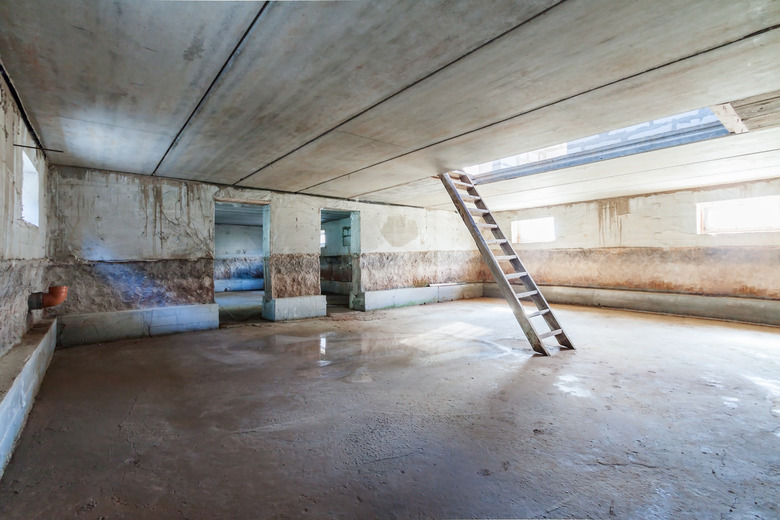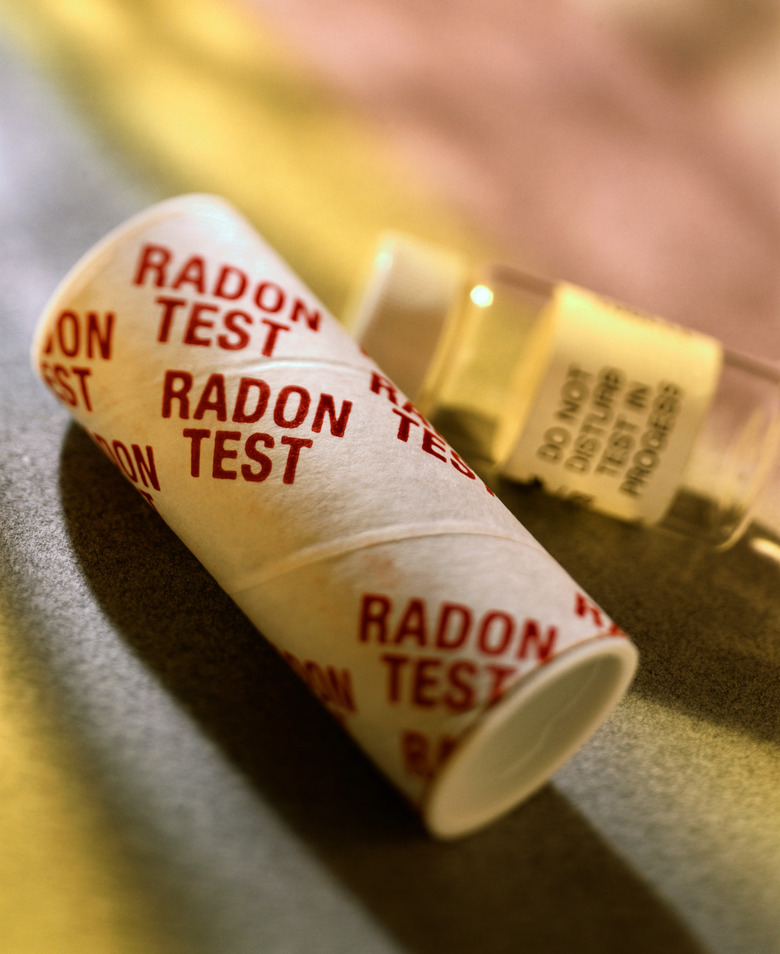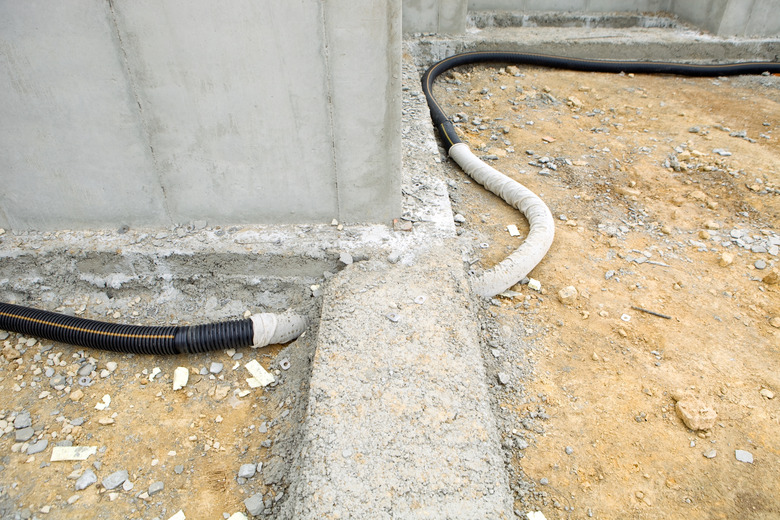Is Radon Dangerous? Here's What To Know About This Radioactive Gas In Your Home
We may receive a commission on purchases made from links.
You've likely never thought about the radon levels in the house — especially since radon is odorless, tasteless and almost impossible to detect on your own accord — but it's a problem that can't be ignored. Citing data from the Environmental Protection Agency (EPA) and the office of the surgeon general, the Centers for Disease Control and Prevention identify radon as being responsible for 20,000 lung cancer deaths each year. Next to smoking, it's the second leading cause of lung cancer.
Radon gas occurs naturally, bubbling up from the ground and dispersing in the atmosphere. We breathe it every day, and it only becomes dangerous when the concentration rises above a safe level. That happens inside houses when the radioactive gas seeps through holes and cracks in the foundation and mixes with stagnant indoor air. Although the EPA divides the United States into zones where radon incursion is more or less likely, all homes are vulnerable to some degree.
Despite the danger it poses, radon incursion into the home is fairly easy to control, and there are mitigation methods for existing homes as well as for ones under construction. Radon is tasteless and odorless, so the only way to know if you have radon problems is to test the radon gas levels in the indoor air, and that's also easy to do using DIY radon test kits.
Tip
Next to smoking, radon gas is the second leading cause of lung cancer in the United States. It's a naturally occurring gas that bubbles up from the ground, and radon levels are dangerously high in some homes.
Where Does Radon Come From?
Where Does Radon Come From?
Radon (Rn) is the 86th element in the periodic table and is one of the inert gases, appearing two places before Radium (Ra), the radioactive metal that was used to make glow-in-the-dark watches until people realized how dangerous it is. Radon is a byproduct of the decay of uranium into radium and other radioactive metals, and since uranium occurs everywhere in the planet's crust, so does radon, although concentrations vary from place to place.
Of less importance to homeowners than local uranium concentrations is the type of soil directly underneath the house. A certain amount of uranium decay takes place everywhere, and if the soil is porous in a particular place, that's where the radioactive gas will bubble up. It's possible for radon levels in two homes situated right next to each other to be significantly different.
Radon also dissolves in the groundwater, so homes with wells have a higher risk of radon exposure because the gas can be released when aerating the water by using faucets, washing machines and toilets. Compared to incursion through the soil, the risk of radon exposure through water is relatively small.
How to Test Radon Levels
How to Test Radon Levels
Considering the elevated risk of lung cancer posed by high indoor radon levels, homeowners are advised to test the levels, and they can do this using one of a number of home-use test kits available at home improvement centers and online. Both short-term and long-term kits are available, with long-term ones delivering more accurate results. You use a kit by exposing a sensing material — which is often just a piece of charcoal — to the air in a closed room for a prescribed period and then sending the material to a lab for analysis.
You can also hire a professional for testing. This is commonly performed by a home inspector when the customer is buying or selling a home, and a radon test is added to the inspection. The cost of professional testing starts at about $125. The test involves leaving a monitor inside the home — keeping the doors and windows closed as much as possible — for a period of 48 hours. Test results are available immediately after the test is completed.
Periodic retesting is advised to ensure that radon levels remain consistently low, and in homes with levels that breach the safe level but do not reach the danger zone, a radon detector is better than a single-use test kit. The Airthings 2950 Wave Smart Radon Detector allows you to monitor radon levels using your mobile device. As a bonus, it also monitors temperature and humidity.
What Are Safe Radon Levels?
What Are Safe Radon Levels?
The unit of radioactive radiation is the curie, named after Marie Curie, one of the scientists who discovered radium, and it's equal to the radiation generated by 1 gram of radium. A much smaller unit is needed to measure radon levels, and in the United States, the preferred unit is the picocurie per liter (pCi/L), which is a trillionth of a curie per liter. As you would expect, the rest of the world uses an easier-to-understand unit, the becquerel per cubic meter (Bq/m3), which is equal to one radioactive disintegration per second per cubic meter. One Bq/m3 is equal to 37 pCi/L.
The World Health Organization has established any level under 100 bq/m3 as safe; this being equivalent to 2.7 pCi/L. In the United States, the EPA is less restrictive, considering test results below 4 pCi/L (150 bq/m3) to indicate safe levels. Anything above this threshold is a cause for action, but test results showing levels between 2.7 and 4 pCi/L (100 to 150 bq/m3) still indicate high levels of radon that warrant close monitoring.
Strategies to Mitigate High Radon Levels
Strategies to Mitigate High Radon Levels
Radon gas mitigation strategies can be active or passive and vary according to the situation. An example of a passive mitigation method to implement during new construction is to lay a gravel pad coupled with a heavy-duty plastic barrier underneath the foundation and drive vent pipes into the ground that extend through the roof. Another common strategy is to seal the foundation so gas won't seep through. It's easier to do this when the house is being built, but existing houses can also be effectively sealed with caulk and concrete patching compound.
Active mitigation methods for existing structures include fans that blow into the basement — where the air quality is the worst, and the health risk is most extreme — to pressurize the space and prevent seepage from the ground. An air exchanger can also be deployed to exchange indoor and outdoor air. Another method is to bury pipes under the foundation or around the perimeter to catch the gas and direct it safely into the atmosphere. If the home has a crawl space, covering the ground under the house with heavy plastic sheeting can effectively prevent gases from seeping into the house.
Get Educated About Radon
Get Educated About Radon
Due to a number of popular myths, homeowners might feel justified in ignoring the issue of radon incursion in the home and failing to take action. Some of the top myths are:
- Radon isn't that dangerous.
- Radon testing is difficult and expensive.
- Only people living in certain parts of the country need to worry about radon.
- Radon in the water is more serious that radon in the air.
- The neighbor's house tested negative, so my house is fine.
Because you can't believe everything you read on the internet, it's up to homeowners to do their own research on the health effects of radon gas. A good place to start is with the EPA's online booklet, A Citizen's Guide to Radon, which discusses the health risk (which is higher for smokers than nonsmokers) as well as testing and mitigation strategies. It's not a trivial issue. Each year, radon causes more deaths than drunk driving or than falls in the home, drownings and home fires combined.
If you're like many homeowners, you'll act promptly if you suspect a mold infestation. Shouldn't you respond even more quickly if you suspect the presence of a deadly carcinogen? The simple deployment of a radon detector in addition to your smoke and carbon monoxide detectors will alert you to a potential problem, and that in itself may be all you need to breathe easier.
References
- United States Environmental Protection Agency: Find Information About Local Radon Zones and State Contact Information
- Airthings: Radon Levels: What Do They Mean?
- United States Environmental Protection Agency: A Citizen's Guide to Radon
- Airthings: Top 10 Myths and Facts About Radon
- Centers for Disease Control and Prevention: Protect Yourself and Your Family From Radon


